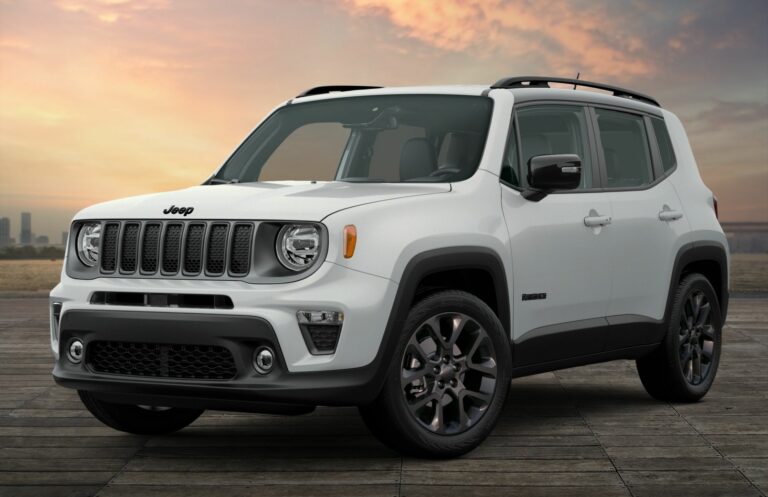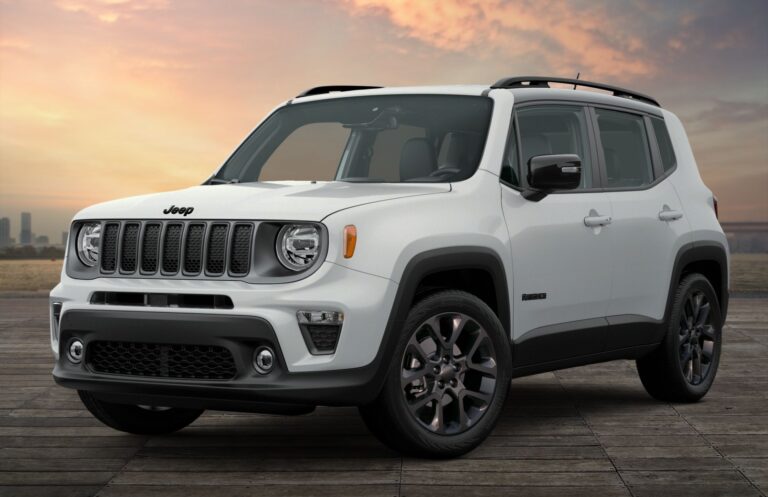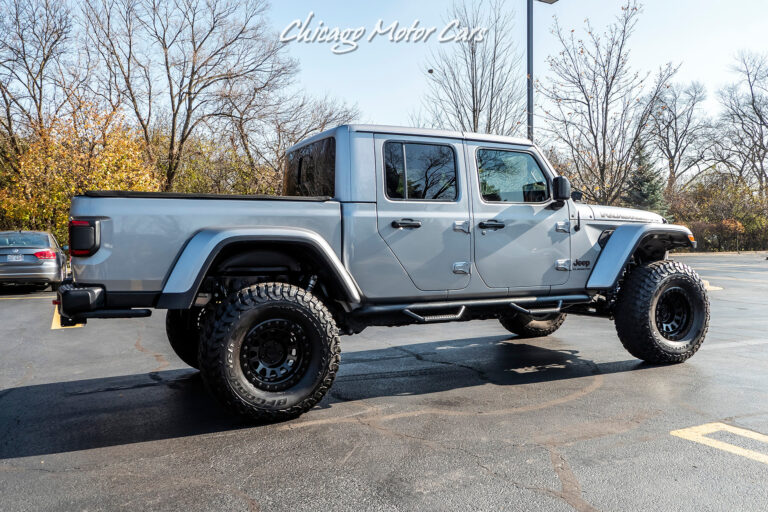2001 Jeep Wrangler Sahara For Sale: A Timeless Icon on the Used Market
2001 Jeep Wrangler Sahara For Sale: A Timeless Icon on the Used Market /jeeps.truckstrend.com
The allure of a Jeep Wrangler is undeniable. It’s more than just a vehicle; it’s a statement, a lifestyle, and a passport to adventure. Among the various generations and trims, the 2001 Jeep Wrangler Sahara stands out as a particularly desirable model, representing the robust and beloved TJ generation (1997-2006). For anyone seeking an authentic off-road experience blended with a touch of unique style, a 2001 Jeep Wrangler Sahara for sale presents a compelling opportunity. This comprehensive guide will delve into what makes this specific model so special, what to look for when buying one, and how to navigate the used car market to find your perfect adventure companion.
Why the 2001 Jeep Wrangler Sahara Still Reigns Supreme
2001 Jeep Wrangler Sahara For Sale: A Timeless Icon on the Used Market
The 2001 Jeep Wrangler Sahara belongs to the TJ generation, widely regarded by many enthusiasts as the sweet spot in Wrangler history. It perfectly blends the classic, rugged appeal of its predecessors with modern comforts and coil-spring suspension, offering a significantly improved ride quality over the leaf-sprung YJ.
What sets the Sahara trim apart from its Sport or SE siblings? The Sahara was designed to be the more upscale and visually distinctive Wrangler of its time. Key features often included:
- Color-Matched Fender Flares and Rocker Panels: Unlike the black plastic flares on other trims, the Sahara boasted flares and rocker panels painted to match the body color, giving it a more integrated and premium look.
- Unique Interior Accents: Expect distinctive fabrics, often in greens or tans, with Sahara-specific branding and color schemes.
- Upgraded Wheels: Typically equipped with unique 15-inch alloy wheels (like the "Ecco" design), adding to its distinct appearance.
- Standard Fog Lights: Integrated into the front bumper for improved visibility and aesthetics.
- Commonly Equipped Options: Many Saharas came from the factory with air conditioning, cruise control, and often both a soft top and a hardtop, offering versatility for all seasons.

Under the hood, the 2001 Sahara universally featured the legendary 4.0-liter AMC inline-six engine (242 CID). This powerplant is revered for its bulletproof reliability, impressive low-end torque (195 hp and 235 lb-ft of torque), and ease of maintenance. Paired with either a robust 5-speed manual (NV3550) or a dependable 3-speed automatic (32RH) transmission, the 4.0L ensures the Wrangler has ample power for both highway cruising and conquering challenging trails. Its solid axle suspension design, short wheelbase, and excellent approach/departure angles make it an incredibly capable off-road machine, ready for anything from rocky trails to muddy paths.
Furthermore, the TJ generation benefits from an enormous aftermarket support network. Whether you’re looking for lift kits, bumpers, winches, or interior upgrades, the possibilities for customization are virtually endless, allowing owners to tailor their Jeep to their specific needs and desires. This combination of classic looks, legendary capability, and a strong community makes the 2001 Jeep Wrangler Sahara a highly sought-after vehicle on the used market.
Key Considerations When Buying a 2001 Jeep Wrangler Sahara
While the 2001 Sahara is a fantastic vehicle, buying any 20+ year old car requires diligence. Here’s what to thoroughly inspect:

- Rust, Rust, Rust: This is the number one concern for TJ Wranglers, especially in regions that use road salt.
- Frame: Critically inspect the frame, particularly around the control arm mounts (front and rear), the skid plate mounting points, and the rear cross member. Look for flaking, holes, or significant pitting. Frame repair can be very costly.
- Body: Check the floorboards (especially under the carpets), rocker panels, fender wells, and door hinges.

- Engine (4.0L I6):
- Oil Leaks: The rear main seal is a common culprit, often leading to a slow drip. Valve cover gaskets can also leak. While not always critical, extensive leaks can indicate neglect.
- Coolant Leaks: Inspect the radiator, hoses, water pump, and thermostat housing for signs of leakage.
- Idling: Listen for a smooth idle. Erratic idling could point to sensor issues (e.g., Crankshaft Position Sensor, Idle Air Control valve).
- Transmission & Drivetrain:
- Manual Transmission: Check for smooth shifting through all gears, no grinding. Listen for unusual noises in neutral or while driving.
- Automatic Transmission: Check fluid color (should be reddish, not dark or burnt-smelling). Shifts should be firm but smooth, without excessive slipping.
- Transfer Case (NP231): Engage 4WD high and low. Listen for grinding or clunking. Check for leaks around the seals.
- Differentials: Check for leaks around the covers and pinions. Listen for whining or clunking noises, especially when turning.
- Suspension & Steering:
- "Death Wobble": This is a violent, uncontrollable shaking of the front end, usually triggered by hitting a bump at speed. It’s typically caused by worn steering components (ball joints, tie rod ends, track bar bushings) or improper alignment/tire balance. Test drive on rough roads to check.
- Bushings: Inspect control arm bushings, sway bar bushings, and track bar bushings for cracking or deterioration.
- Shocks: Look for fluid leaks from the shock bodies.
- Electrical System: Test all lights (headlights, tail lights, turn signals, brake lights), gauges, horn, wipers, power windows/locks (if equipped), and the heating/AC system.
- Modifications: Many Wranglers are modified. Assess the quality of any aftermarket parts (lift kits, bumpers, winches, larger tires). Poorly installed lifts can lead to handling issues or premature wear of components. Ensure larger tires are properly geared.
- Documentation: Request service records to verify maintenance history. A CarFax or AutoCheck report can reveal accident history, previous owners, and odometer discrepancies.
Tips for a Successful Purchase
- Pre-Purchase Inspection (PPI): This is non-negotiable. Have a trusted mechanic, ideally one familiar with Jeeps, perform a thorough inspection before you commit to buying. They can spot issues you might miss.
- Test Drive Extensively: Drive on various surfaces – highway, city streets, and if possible, some rough terrain (with seller’s permission). Listen for unusual noises, check braking performance, steering response, and how the transmission shifts. Engage 4WD high and low.
- Inspect the Frame Personally: Get underneath the vehicle with a flashlight and a small hammer (to gently tap suspicious areas) to check for rust. If you’re uncomfortable doing this, that’s what the PPI is for.
- Ask Targeted Questions:
- Why are you selling the Jeep?
- What kind of maintenance has been done recently?
- Has it been off-roaded extensively? (Light trail use is fine, but extreme rock crawling can put significant stress on components).
- Any known issues or quirks?
- Budget for the Unexpected: Even a well-maintained 20-year-old vehicle will likely need some attention. Factor in a buffer for immediate repairs or maintenance items (e.g., fluid changes, tire replacement).
- Don’t Rush: There are many TJs out there. If a deal feels off, walk away. Patience is key to finding a good one.
- Join Jeep Forums: Websites like JeepForum.com or WranglerForum.com are invaluable resources. You can ask questions, get advice, and learn about common issues specific to the TJ generation.
Living the Jeep Life: Ownership Experience
Owning a 2001 Jeep Wrangler Sahara is more than just driving; it’s an experience. You’ll quickly become part of the "Jeep Wave" community, a friendly gesture shared between Wrangler owners. Maintenance on the 4.0L engine is generally straightforward, and parts are readily available and often affordable. While fuel economy isn’t its strong suit (expect 15-18 MPG depending on modifications and driving style), the sheer joy of removing the doors, folding down the windshield, and feeling the open air makes it worthwhile.
Customization is a huge part of Jeep ownership. From modest lift kits and larger tires to complete overhauls for rock crawling, the Sahara serves as an excellent platform. Its robust construction means it can handle significant modifications, allowing you to tailor it to your adventurous spirit.
Estimated Price Table: 2001 Jeep Wrangler Sahara For Sale
The price of a 2001 Jeep Wrangler Sahara can vary significantly based on condition, mileage, location, modifications, and rust levels. This table provides a general estimate for the US market.
| Condition Category | Mileage Range | Estimated Price Range (USD) | Key Factors Affecting Price |
|---|---|---|---|
| Excellent | < 80,000 | $15,000 – $25,000+ | Minimal to no rust, pristine frame, stock or tastefully modified, full service records, desirable color/options (e.g., both tops, AC). |
| Good | 80,000 – 150,000 | $10,000 – $15,000 | Minor surface rust (easily treatable), solid frame, well-maintained, may have minor wear/tear. |
| Fair | 150,000 – 200,000 | $6,000 – $10,000 | Moderate frame rust (manageable but needs attention), higher mileage, likely needs some mechanical work (e.g., suspension components, minor leaks). |
| Project/Poor | 200,000+ | $3,000 – $6,000 | Significant frame rust (may require welding), major mechanical issues, extensive cosmetic flaws, suitable for an experienced restorer. |
Note: These prices are estimates only and can fluctuate based on market demand, regional differences, and specific vehicle features/modifications.
Frequently Asked Questions (FAQ)
Q1: Is the 4.0L inline-six engine reliable?
A1: Yes, the 4.0L is legendary for its reliability and longevity. With proper maintenance, it can easily surpass 200,000 or even 300,000 miles. Common issues are usually minor, like oil leaks (rear main seal) or sensor failures.
Q2: What is "death wobble" and how can I avoid it?
A2: "Death wobble" is a violent, uncontrollable shaking of the front end, often triggered by hitting a bump at speed. It’s usually caused by worn steering and suspension components (e.g., track bar, tie rod ends, ball joints, control arm bushings). To avoid it, ensure all front-end components are in good condition, tires are balanced, and alignment is correct.
Q3: How bad is rust on 2001 Wranglers?
A3: Rust can be very bad, especially on the frame, if the Jeep lived in areas with road salt. Always perform a thorough inspection of the frame and body. Significant frame rust can be a deal-breaker.
Q4: Can a 2001 Wrangler Sahara be a daily driver?
A4: Yes, many people daily drive TJs. However, be aware of their characteristics: not the most fuel-efficient, a somewhat rougher ride than modern SUVs, and limited cargo space. The joy of open-air driving often outweighs these minor drawbacks for enthusiasts.
Q5: What’s the main difference between the Sahara, Sport, and SE trims?
A5: The SE was the base model with a 2.5L 4-cylinder engine (less common in 2001, mostly earlier TJs) and fewer features. The Sport was the mid-range with the 4.0L engine and more options. The Sahara was the top-tier trim, always with the 4.0L, and distinguished by its color-matched fender flares, unique interior, upgraded wheels, and more standard features like fog lights and often AC.
Q6: Are parts for a 2001 Wrangler hard to find?
A6: Absolutely not. Due to the popularity and longevity of the TJ generation, parts are abundant and relatively inexpensive, both OEM and aftermarket. This makes ownership more affordable and customization easier.
Conclusion
The 2001 Jeep Wrangler Sahara remains a highly desirable vehicle, a testament to its enduring design, legendary off-road capability, and the robust engineering of the TJ generation. Its unique Sahara styling cues, combined with the indestructible 4.0L inline-six engine, make it a standout choice for anyone seeking an authentic, fun-to-drive, and incredibly versatile SUV.
While the search for a 2001 Jeep Wrangler Sahara for sale requires careful inspection, particularly concerning rust and mechanical health, the rewards are immense. For the informed buyer, it offers a gateway to endless adventures, a strong community, and a vehicle that holds its value remarkably well. With proper due diligence, you can find a well-preserved example that will provide years of open-air thrills and off-road excitement. The perfect adventure awaits!




